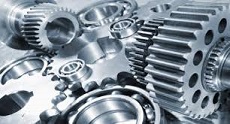
In many industrial operations, products can incur damages in different ways. Your machinery or products can be damaged in improbable ways and you’re left dumb, no idea on what to do especially when you’re broke. Such incidents get you off guard and you feel so overwhelmed. This shouldn’t worry you! It’s easy!
All you need to do is learn how to maintain your machinery to prevent such damages. And how do you do this? Once you have your machinery guidelines, read through them and make sure you apply appropriately. It may sound boring, but just read through the outlined guidelines to familiarize yourself with the manufacturer’s guide.
Below are basic ways you can prevent your automated equipment and machinery from getting damaged.
- Watch Your Weight
Watching your weight will ensure that your machinery and automated equipment holds the recommended weight. Know your storage rated capacities before posting your products. This will prevent your machinery from breaking down. Perhaps, this might be a cliché to you, but you’ll be surprised to find yourself making the same mistake repeatedly. Overloading your machinery will always cause inventory destruction.
- Install Safety Equipment
Installation of a safety equipment is very important. It prevents you from getting injured and ensures your equipment is safe. For example, installing a rack safety net will ensure human safety and also prevent damage of your products in industrial operations.
Additionally, installing equipment that’s versatile into your working operation ensures efficiency preventing losses. Let’s be honest here; no-one loves spending extra on damages. So, install safety equipment, and protect your machinery from unnecessary damages that you could avoid.
- Utilize Accumulation Conveyors
Utilizing accumulation conveyors will ensure that your products are held in place until signaled for their release. The exerted pressure on the product can be adjusted to a minimum, or even banished altogether- this will help prevent products from colliding with each other and causing budding damage. This can be useful to you especially when a long line of products has to be accumulated without pressure so that they can be utilized in different processes such as loading, sorting, or even picking. You can also opt for custom cable chain if you don’t have other options in mind.
- Work Ergonomically – Balance Caution vs. Speed
Working ergonomically prevents discomfort and maximize efficiency too. When you are tired from working at unnatural angles, you are probably going to make mistakes and your products are likely to undergo damages. However, you can still prevent this by working on your workstations – set them to the correct heights. Alternatively, you can use balancers and lifts that helps reduce physical stress. Additionally, this will help you prevent damages to products during processing or packaging.
- Provide Proper Training
Training is very crucial. Therefore, your employees need to be trained properly on how to handle different machines before they start operating them. All machinery has a set of safety instructions and operation techniques. So, it’s not advisable to operate equipment without reading instructions from the manufacturer. Your trainer should be skilled and be able to make recommendations for any modifications that you may need to make the process easier and safer for you as a trainee.
Conclusion
Damages are very expensive in many ways, and by following the above basic guidelines, you will ensure efficiency of your machinery thus preventing damages.






